Search Results for: Puerto Rico
Israel Tanenbaum from The Latinbaum Jazz Ensemble in ISM
The Island of Enchantment never ceases to amaze us and we continue to marvel at the fact that this small territory has been able to give the world so much talent, especially in music. Today, it is up to talk about Puerto Rican producer, arranger, composer and pianist Israel Tanenbaum and the enormous contribution that this great artist has made to Latin music over the last few decades.
Israel Tanenbaum is also a bandleader who has produced more than 50 albums and participated in over a hundred recordings throughout his career, so his experience in this field is more than proven. We were fortunate to talk to him in just over half an hour and we will proceed to cover the most important issues in the following lines.
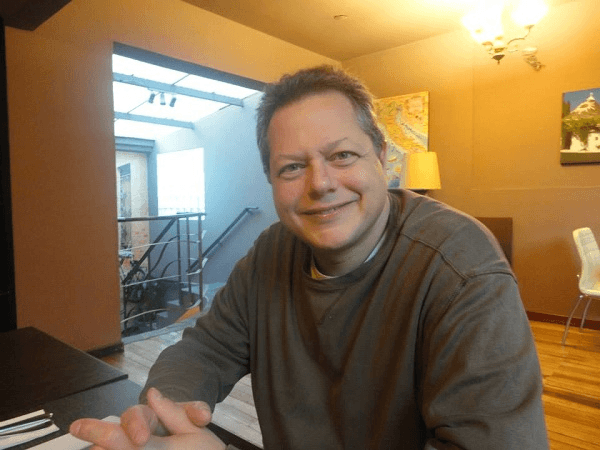
Israel and his passion for the piano
Although Israel is widely known for his piano skills, this was not the first instrument he started playing, but the organ. As a child, he was given a toy organ and that was how he made up his mind and train his ear for music.
In addition to that, he told us an anecdote about how one day he went to a music store with his parents and they left him alone for a while, time that little Israel used to play a huge object that caught his attention: an organ much bigger than the one he used to play at home. It was by watching the organist that he decided to position himself in front of the instrument and started imitating what the musician was doing with his little hands.
He waited until the organist moved away from the instrument to sell it to a customer and Israel took the opportunity to get into the seat and start playing the instrument’s keys and foot pedal. After playing the five or six songs he knew, he noticed that he had a silent multitude watching what he was doing and once he finished playing, people started clapping their hands furiously at such a waste of talent in a child this small.
That was when his parents decided to buy him an organ and a piano. A few years later, namely when he was 12 years old, Israel was already playing on the streets in a more professional way.
Israel’s self-taught formation in music
Israel’s initial training as a musician was entirely self-taught for the first few years. In fact, he says that when he started studying the craft for real when he had already been earning a living as a musician for more than 10 years.
With regard to sound engineering, Israel says he had to become professional in this area ”in self-defense”, as he had problems with several sound engineers who did not have a good musical ear, so they ended up damaging some of his recordings unintentionally. This led him to learn to work on the engineering himself so that this kind of thing would not happen again.
On the other hand, the arrangements and production process had to do with some experiences he had had. One of them happened when, at the age of 16, a friend’s father, an important person in the industry, on one occasion, introduced him to Machito, who very kindly invited Israel to go on stage and sit next to him to learn from what he saw that night. This experience marked the pianist so much that he said to himself: ”this is what I definitely want to do for the rest of my life”.
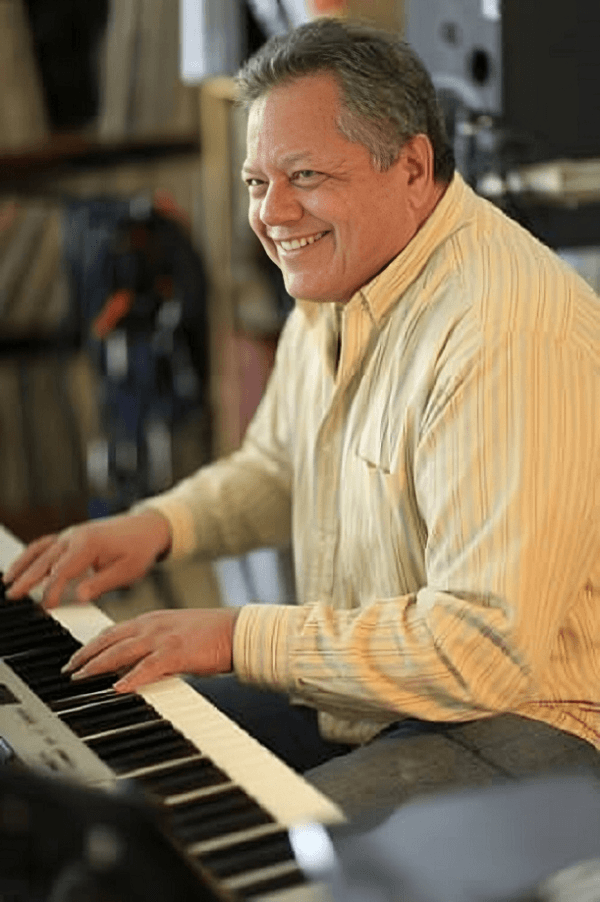
Colombia’s role in Israel’s career
Colombia has been key to Israel’s career for several reasons and one of them is that his most productive time of life was spent in the coffee-growing country. The artist had already traveled to that country to accompany artists such as Pete ”El Conde”, Marvin Santiago and Arabella, but the situation was different when he had to tour with the group Batacumbele. This tour was scheduled to last about 10 days, but it was prolonged for 10 years.
In those days, it turns out that he met by chance with Alexis Lozano, director of Orquesta Guayacán, who proposed him to stay in Colombia a longer time to produce the orchestra’s second album and he accepted. After this, he continued to receive proposals of this style and, almost without realizing it, he already had 10 years living in Colombia and more than 80 albums produced. In addition to Orquesta Guayacán, he worked with Grupo Niche, Cheo Acosta, Alfredito de La Fé and many more.
”My real professional growth took place in Colombia, but my love for production began in Puerto Rico from the hand of percussionist Roberto Roena, whose orchestra was led by me for about two years. When we were recrding the album ‘El Regreso’, I spent many hours with Roberto in the studio and, seeing how dedicated, detail-oriented and precise he was with every chord and note, I was inspired to do the same at some point. That’s how I accepted all the opportunities to produce that arose in Colombia some time later. I owe all of that to Roberto” Israel said about his time as a producer in the South American country.
In addition to his work side, Israel also says that Colombia means a lot to him on a personal level, since this country makes him feel at home and he has many friends there. Not to mention that his own wife is Colombian and one of his children was born there, so he is more than attached to that land for life.
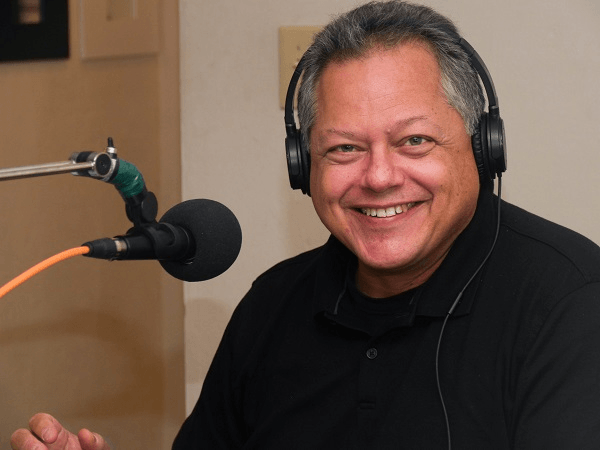
Life in Puerto Rico and Hawaii
In addition to Colombia, Israel also lived in Puerto Rico and Hawaii. He assures that from each of the places he has been, he has extracted something from their folklore and roots to add to his musical work. He says it is the best way to understand that country and the taste of its people.
”If you want to understand the people of a country, you have to go back to their folklore and assimilate it. I lived in Venezuela for about six months and, being there, I became familiar with the quitiplás (a typical percussion instrument of Venezuela), the sangueo, the llanera music and many other elements of the musical culture of that country” Israel said on this issue.
”I lived in Hawaii for almost three years, during which time I founded my first salsa orchestra. I served in the army with Quique Peña, a nephew of maestro Lito Peña, an eminence in Puerto Rico. The young man, whose classical training was extremely intense, taught me to transcribe what each instrument plays in detail. This was an invaluable lesson that served me well for what came later in my career. I also had the opportunity to study with maestro Eddie Palmieri, Papo Luca, José Milé, Jorge Milé, José Febles, among others. I transcribed music for all of them” Israel added on the issue.
Israel Tanenbaum & The Latinbaum Jazz Ensemble
”Impressions”, Latinbaum’s most recent album, was the result of an extensive musical stry that tells a wide experience with genres, styles and musicians of all kinds. Israel started this recording nine years ago, but he was always very busy with the rest of the recordings he was producing, so he always ended up abandoning this project.
Once he had the album ready, but one day Israel had a catastrophic loss of equipment and recordings that led him to practically start the album from scratch, from which he could only save a single song. In the end, he opted to tear up and throw away the arrangements he had in order to start all over again. It took about eight more months to have the album ready again, and today, the musician is grateful that things went down like this, since this material represents the artist he is today for being more current.
It is then when he sought out the artists and musicians who would accompany him in this new production, which would be his first solo album after having produced more than 100 other people’s albums.
From now on, he wants to release a Latin Jazz production with his own orchestra every year and all of them under his new label, Latinbaum Records.
Read also: Grupo Batachá, Houston’s Premier Latin band
Latin America / June 2024
Eric Maldonado from La Paris All-Stars’ work behind the scenes
Latin music, more specifically salsa, has had several initiatives over time that have managed to keep it alive and relevant in the popular taste and one of them is undoubtedly La Paris All-Stars Orchestra, which is a musical group based on old school salsa, but with current technological advances.
The orchestra was created by the producer and sound engineer of Puerto Rican descent Eric Maldonado, with whom we have been able to talk about the group and his own career, so our dear readers can not miss this reading, as it will be very interesting.
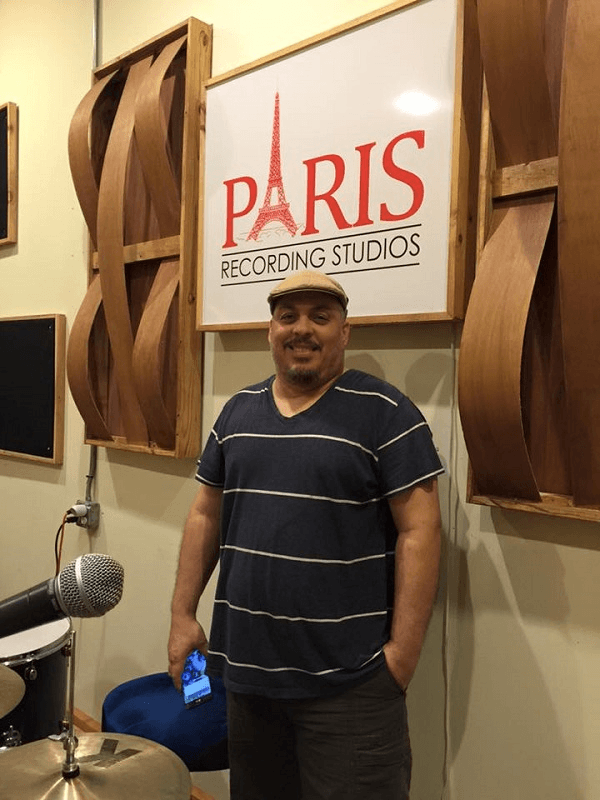
How Eric enters the world of music
Eric begins his story by saying that he was the youngest of the family and both his father and brothers were always playing instruments, so his first contact with music occurred when he was practically a baby. He says that there were always relatives at home every weekend who came together to play jibaro music, salsa, merengue, cha cha cha or whatever they could think of that day.
These family roots have encouraged to have a deeper interest in music, to the extent that he began to see it as a serious profession and not just a hobby.
Eric and sound engineering
By the time he turned 20 in the 1990s, Eric started playing bass in a band for a while, until he tried his hand as a soundman in the local band in New Jersey and realized that this was what he was truly passionate about. It did not take long for him to realize that being a musician was not his thing, but being behind the console and running the machinery behind the stage was. That is when he started purchasing the equipment he knew he would need and learning more about this part of sound engineering.
Eric defines himself as someone who does not really like to stand out too much or feel really observed by those attending a show, so he prefers to help all he can on the organizational part and at the level of engineering in the events that he is involved. He affirms that his thing is choosing the talent and creating all the music that the musicians or singers are going to use, while he stays behind the stage taking take that everything forges ahead.
He described feeling satisfied working in this way and has no problem with the artists taking most of the credit in front of the audience.
The Paris All-Stars Orchestra
It is important to note that, before founding the orchestra, Eric already had a recording studio called Paris Recording Studios. What inspired him to create a band was an event he did at a club in Florida shortly after moving to that city. The producer already knew some musicians thanks to his work and proposed them to form an orchestra that would take its name from the studio and be called La Paris All-Stars. ”That night, there were so many people who came to see us play that the place was packed and many of them were unable to get in. That’s when I knew this was going to be a success and the creation of the group was a good idea” said Eric about this first test concert.
Upon seeing how successful this first concert with the group was, Eric decided to record a complete album which he named ”Los Escogidos” since it would only include the best singers that he would choose for this record production.
He also wanted to clarify that he is the owner of both the studio and the orchestra and both go hand in hand in everything he does.
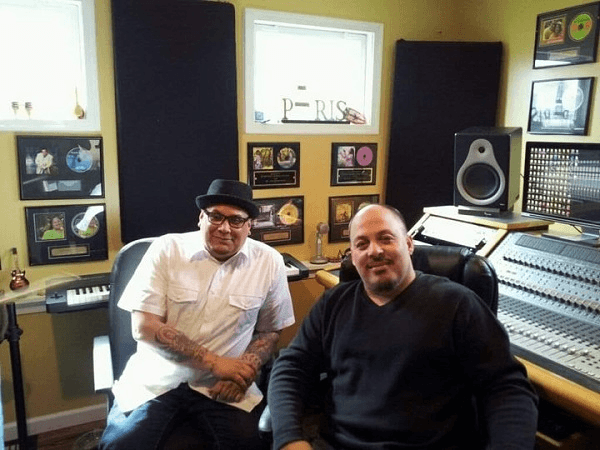
The Paris All-Stars Orchestra: old-school salsa with today’s tools
When we asked Eric if he agreed with those digital media that defined La Paris All-Stars Orchestra as an initiative linking old school with today’s tools, he answered absolutely.
Noticing that reggaeton and bachata no longer dominate the international market like they once did, Eric took advantage of the fact that there are many new artists wanting to experiment with salsa to make them his clients and work with them from any country such as Mexico, Cuba, Colombia, Venezuela, among others.
Although he added that he does not limit himself to any genre and works with a bit of everything, he assures that the music he loves the most is and always will be salsa. He regrets that broadcasters do not give a lot of exposure to salsa as before, but also highlights the support the exponents of the genre have received from media and digital stations that have been given a space to new salseros in different parts of the world.
Eric’s references for the Paris All-Stars Orchestra
When listening to any of the orchestra’s songs, there is no denying that its work is inspired by several of the biggest referents of salsa and one of them is Ismael Miranda, who was one of the members of the album ”Los Escogidos”, sharing the credits with Kevin Ceballos, Anthony Colón, Frankie Ruíz Jr., among others.
Eric called the previous artists, who already had an important name in the industry, in order to attract new singers to join his projects and, in this way, make them known to the public. The producer assures that he likes to help new talents and considers them a fundamental part in the promotion and the new rise of salsa today.
”I am very happy several of these new singers who worked with me have already been blazing their own trail and some of them are even doing big concerts, which makes me very pleased”, he said.
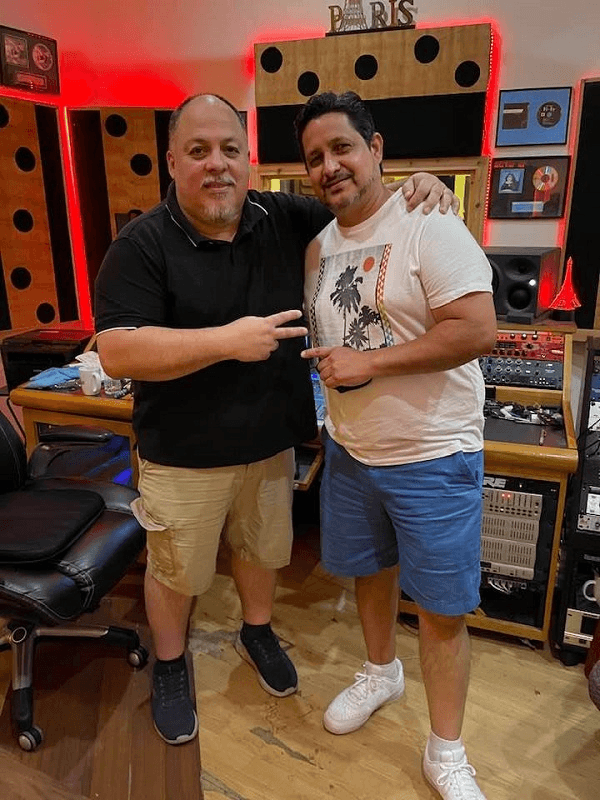
Latest works of La Paris All-Stars Orchestra
The first single from La Paris All-Stars in the year 2024 was ”Son Mentiras”, which, according to Eric, was to be part of ”Los Escogidos” at the beginning, but after recording so many good songs and finding so many talented vocalists, he decided to rethink his initial plan and only released it as a single. The final version of ”Los Elegidos” is scheduled to be released in June this year on all digital platforms after finishing a track still missing from the record production.
We also could not put aside the group’s new release ”Yo soy La Rumba”, which is part of ”Los Escogidos Volumen 4” and features one of the more promising salsa singer currently, Kevin Gabriel, a young talent who was born in Puerto Rico and has managed to participate in several renowned ensembles and orchestras thanks to his great voice.
One day, Eric heard Kevin Gabriel singing by sheer chance and became fascinated with the young man, but he knew that the label with which he had signed was not exploiting his full potential, so he proposed him to join his project and he accepted. Together with him, Eric released ”Yo Soy La Rumba” and soon there will be an entire solo album of the young singer. This boy is a clear example of what Eric seeks to promote with his work and has no doubt that there will be many more like him, whom the sound engineer will be more than happy to support.
Read also: Medusa Pop Band delights its fans with a pretty interesting mix of rhythms
Unstoppable Hollywood Salsa Fest focuses on the importance of Salsa
In the midst of the release of the single in which she collaborated with Edwin “El Calvito” Reyes ‘Dos pa’ lante’, on April 13, 2024; Melina Almodovar performed at the most important salsa festival in South Florida in the U.S. Melina also serves as an entrepreneur, along with her partner Cristina Moinelo, for the past nine years.
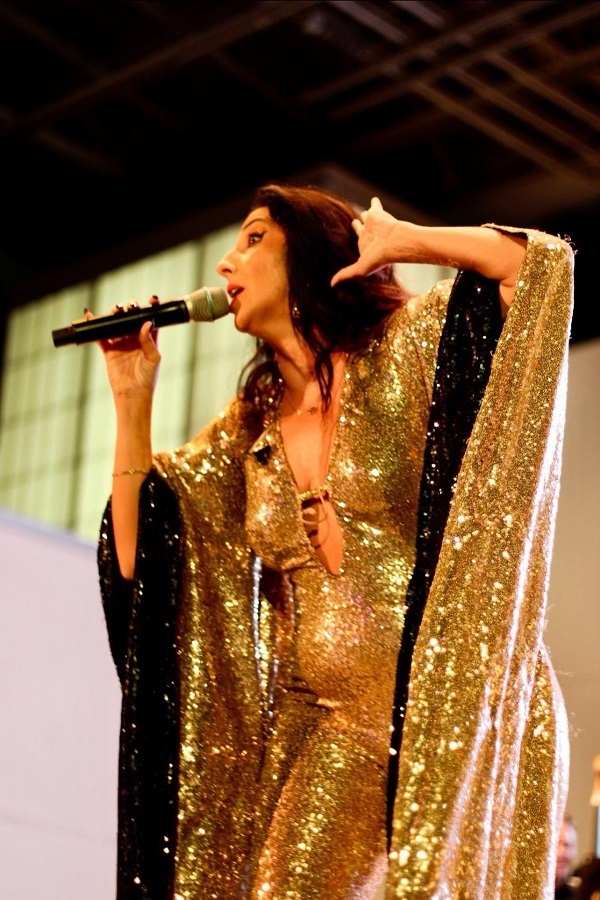
Each year, the Hollywood Salsa Fest focuses on the importance of salsa music, recognizing that Afro-Latin music fuses us into a culture that draws from diverse roots. This year’s festival – sponsored by the city in a public-private partnership with various businesses – was held at the Artspark at Young Circle.
As masters of ceremony, the festival featured the winning team of “Meca” from Salseo Radio and “El Cacique” from Zeta 93 FM, Puerto Rico’s leading salsa radio station. On the decks was DJ “Boricua loco” with a tremendous selection of salsa, in addition to coordinating from his musical corner the dance exhibitions by the salsa dancers of YC Dance Studios.
The first orchestra in charge of starting the concert, Latin All Stars, counted with the vocal and scenic mastery of Marlon Mendioroz, Yorman Clay, Adrián Marchant, Yomil Rivas and Frank Cróquer, backed by a musical team that did not fall short of the expectations of those who waited patiently for the stage to light up with good salsa. Latin All Stars was followed by “Juano, tu cantante” from Cali, Colombia. The team of musicians of the orchestra with the second shift shined accompanying who for 16 years was part of Orquesta Guayacán.
The trumpet player also performed in the mid-afternoon block, preceding the arrival of the Hollywood Salsa Fest Orchestra in a segment in which they accompanied Hilda Naranjo from Cuba, Fabián Rosales from Chile and Joey Hernández from Puerto Rico.
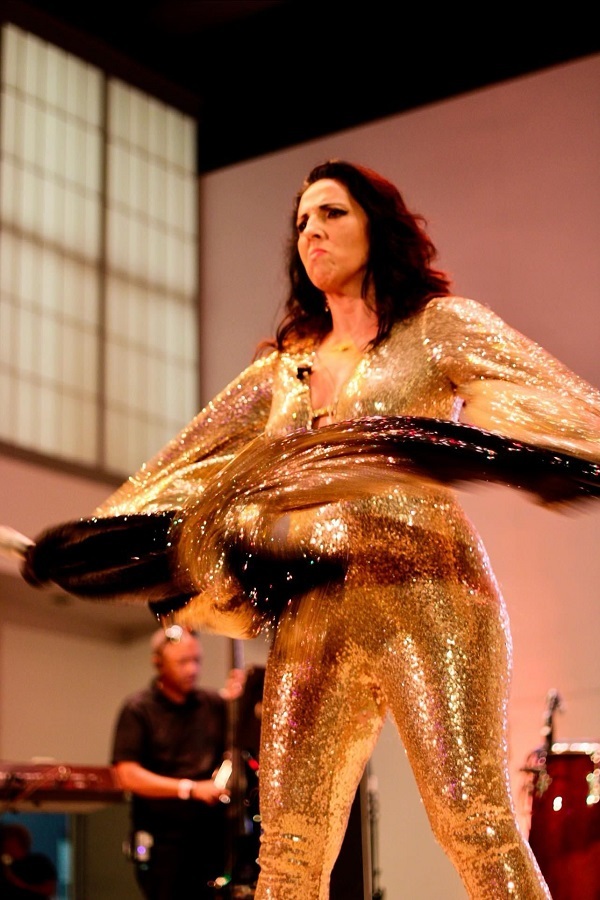
At around 6:00 p.m., it was the turn of the Cuban sound known as timba, with the Julio Montalvo Orchestra and Miami’s Huracán. Once the hurricane winds that accompanied Julio Montalvo ceased, tribute was paid to the late Venezuelan percussionist Robert Vilera thanks to the staging of Vilera Son. The tribute to Vilera’s legacy featured the talents of Los Gaitanes from Panama, Avelino Romero from Venezuela, El Mola and Braidsman from Cuba, as well as Robert Vilera’s first singer, Felix Argenis.
“La muñeca de la salsa”, Melina Almodovar, was backed by Luigi Flores from Costa Rica on piano and musical direction, Johnny Fortunato from Dominican Republic on bass, Pablo Molina from Venezuela on timbales, Juan Pablo Camacho from Venezuela on tumbadoras, Carlos Molina from Venezuela on bongo, Carlos Perez from Cuba on first trombone, Ramon Benitez from Colombia on second trombone, Carlos Frank from Cuba on first trumpet and Julian Cifuentes from Colombia on second trumpet.
On backing vocals, Melina was backed by: Joe Arroyo from Puerto Rico and Freddy Lugo from Cuba. Melina gave us a first class show. As part of Melina’s performance, “El Calvito Reyes” joined her for the first time to perform the recently released single ‘Dos pa`lante’ as a live duet.
During the afternoon, the festival took place under a beautiful blue sky that kept the crowd’s enthusiasm positive. During the night, the clear Floridian skies kept the attendees dancing at full steam. Of course, to that end, the aforementioned talents kept the stage in salsa.
The festival closed with the always remembered for the classic ‘De barrio obrero a la 15’, Chamaco Rivera, who with a stellar salsa career to his credit, not only kept the audience engrossed in his impeccable staging, but also introduced us to his guest artist, his son: Christian Ray.
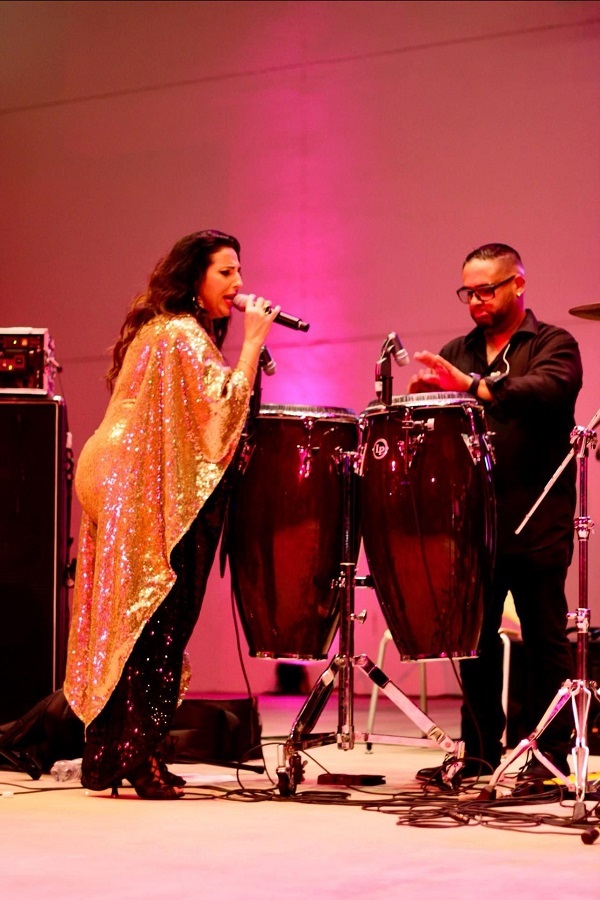
Christian delighted us with his repertoire shortly before inviting us to listen to his recently released CD entitled El legado continúa. To bid farewell to the musical day, which lasted nearly ten hours, the grand finale invited the group of singers who had paraded on stage during the day and part of the night to come in and jam with the “papa de los pollitos” (father of the chicks).
We are waiting to enjoy the next ‘Hollywood Salsa Fest’, for which the businesswomen in charge promise to throw the house out of the window. Melina and Cristina have delivered nine festivals in a row. So see you in April 2025 to dance in the tenth edition of the same.
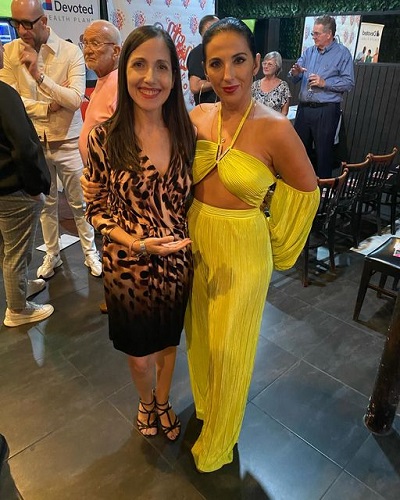
Also Read: A party of dancers at the concert to celebrate Willie Rosario’s 100th birthday




























